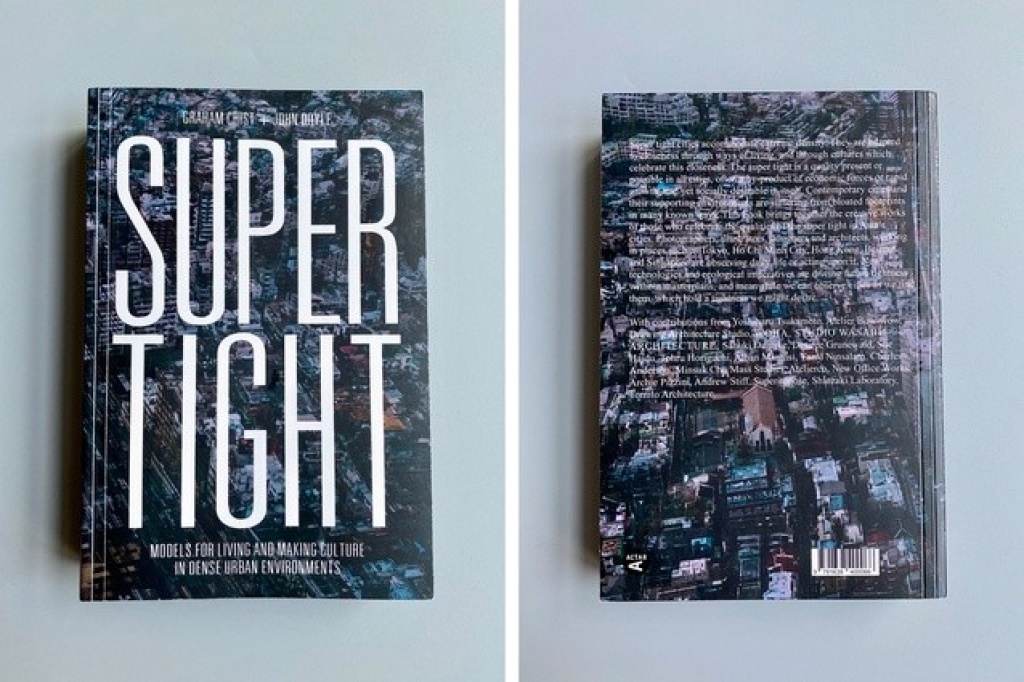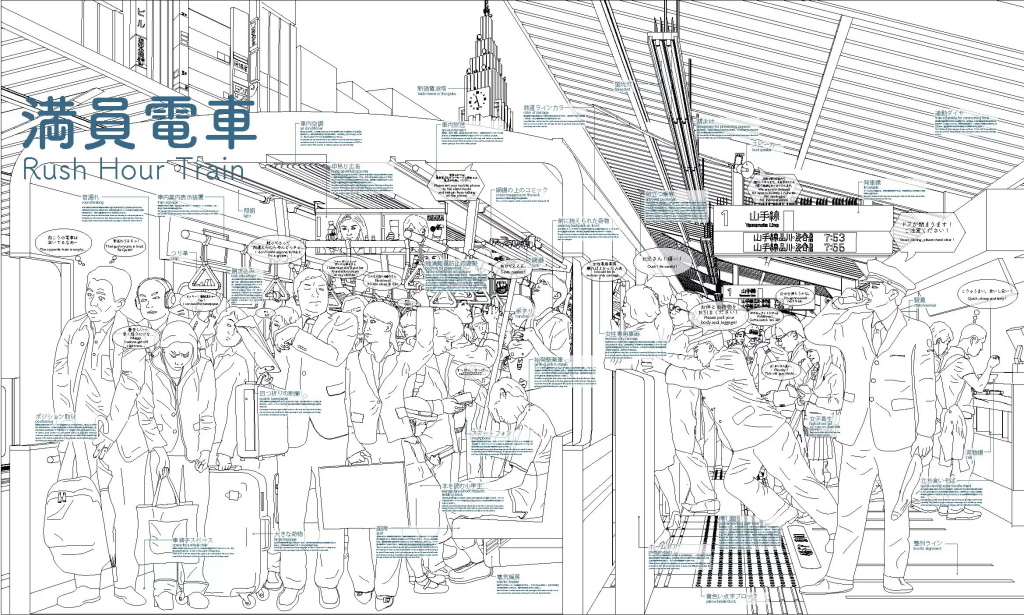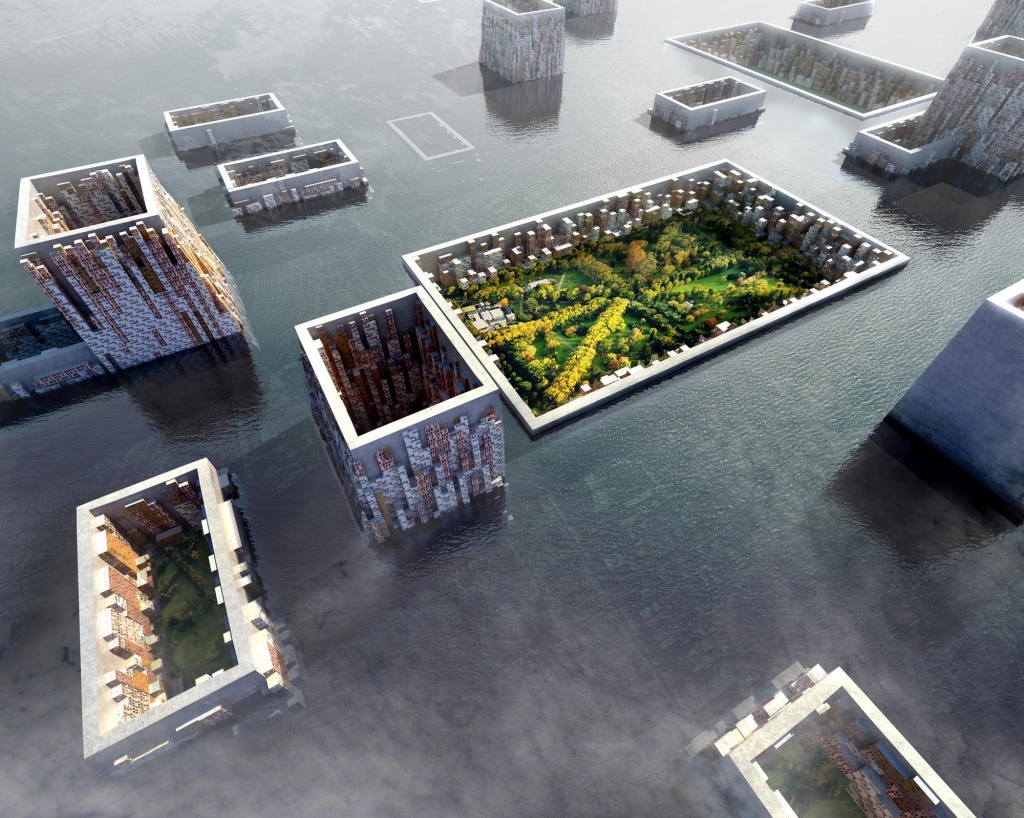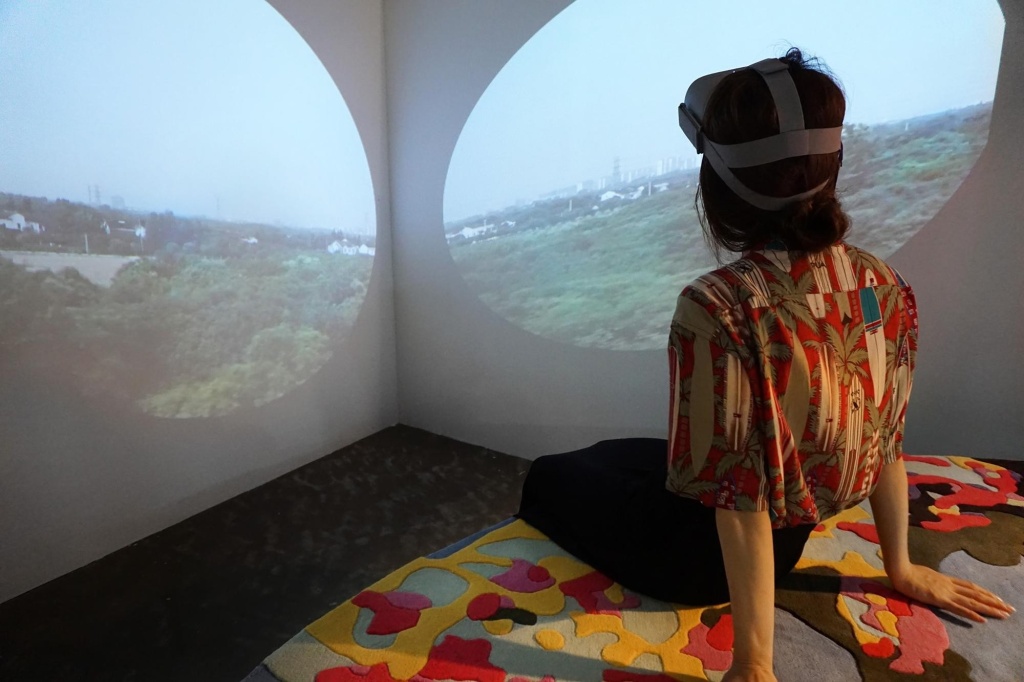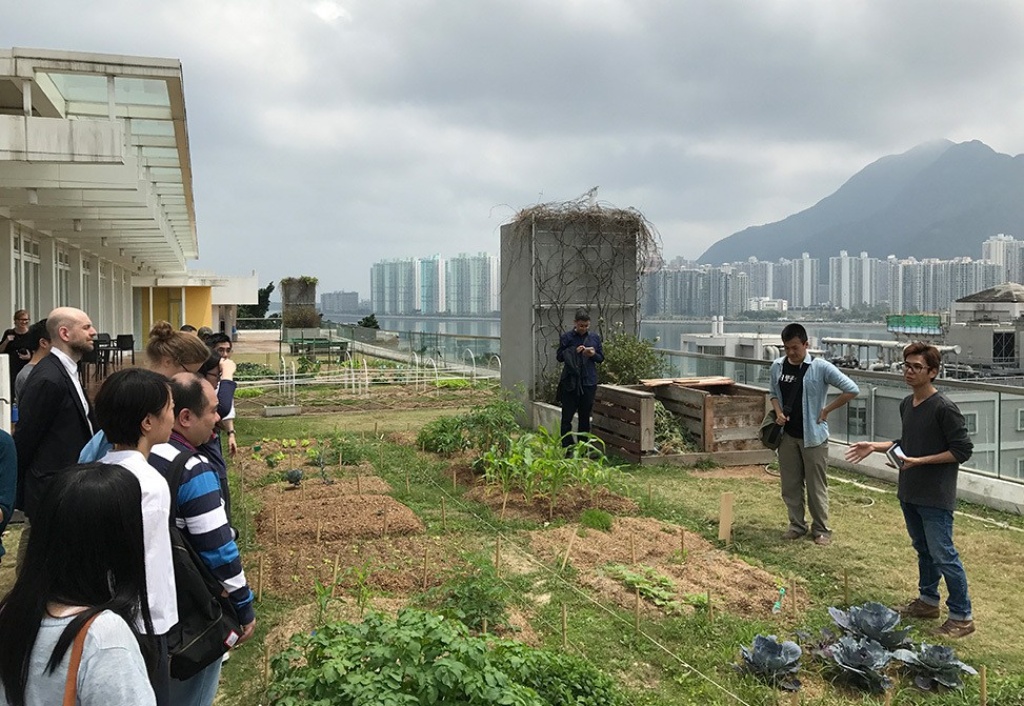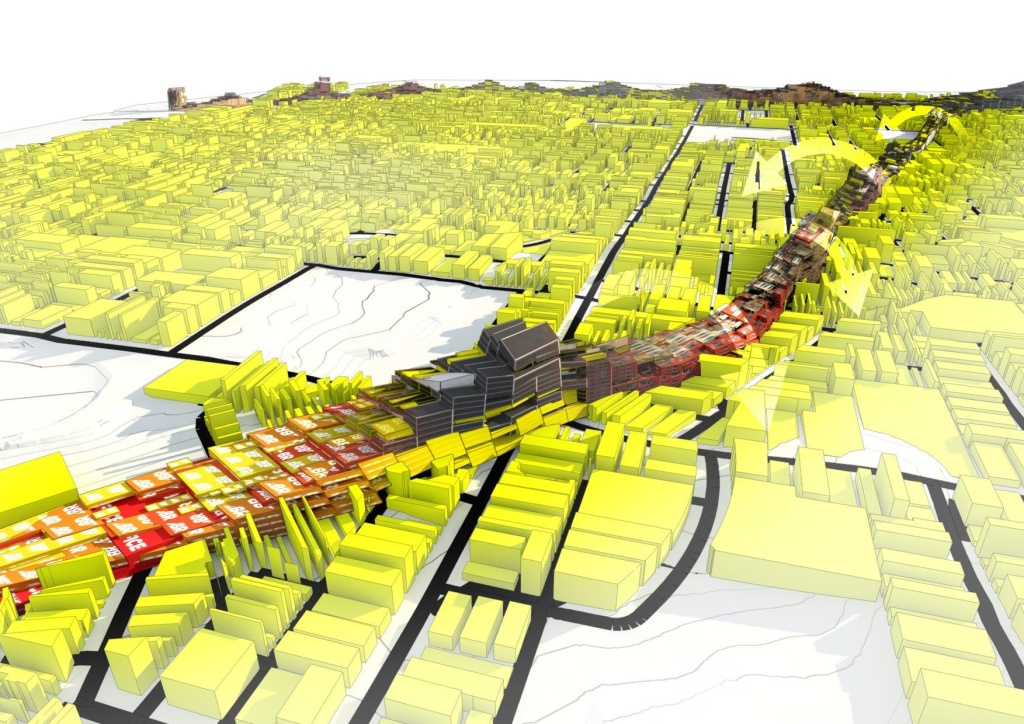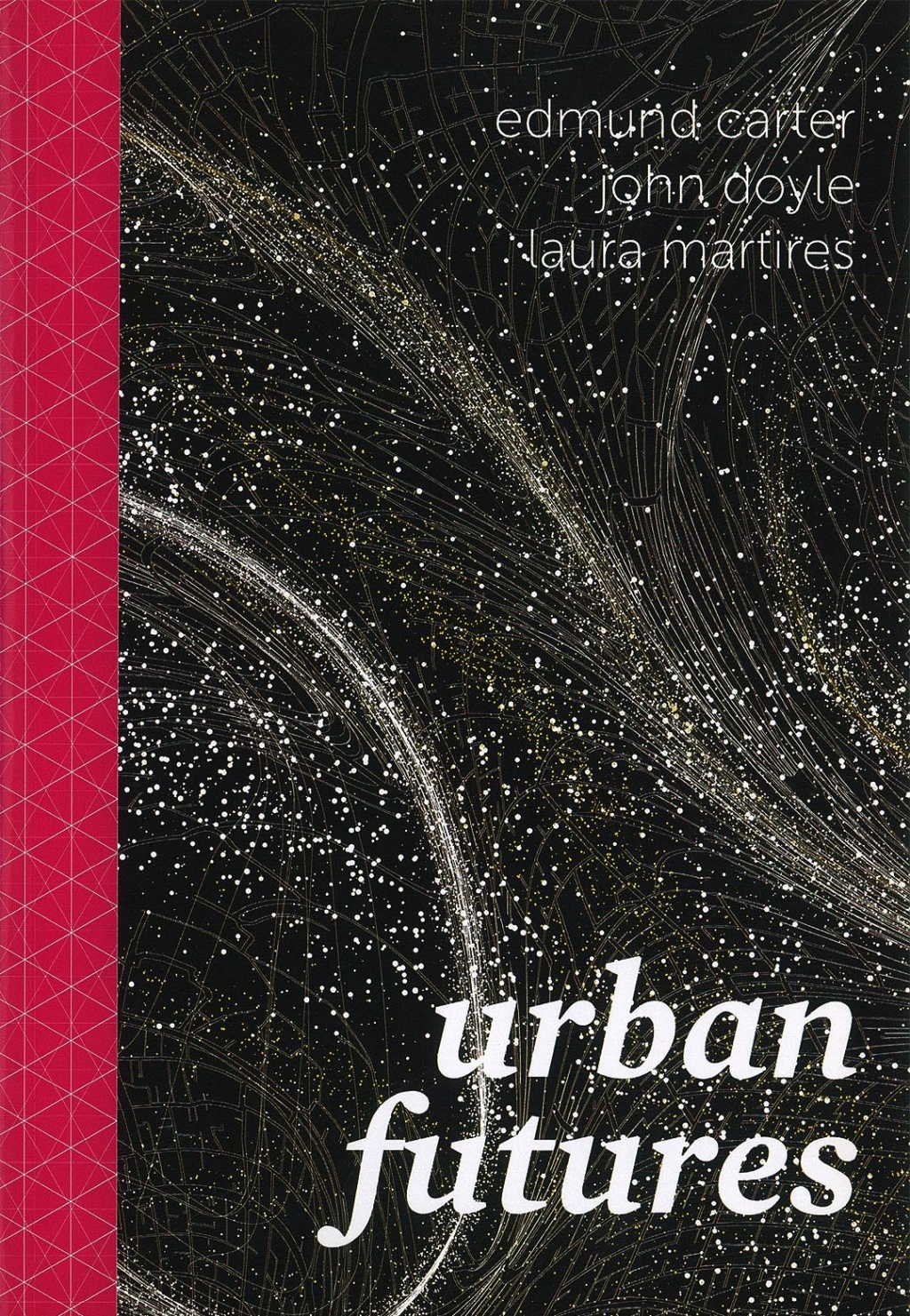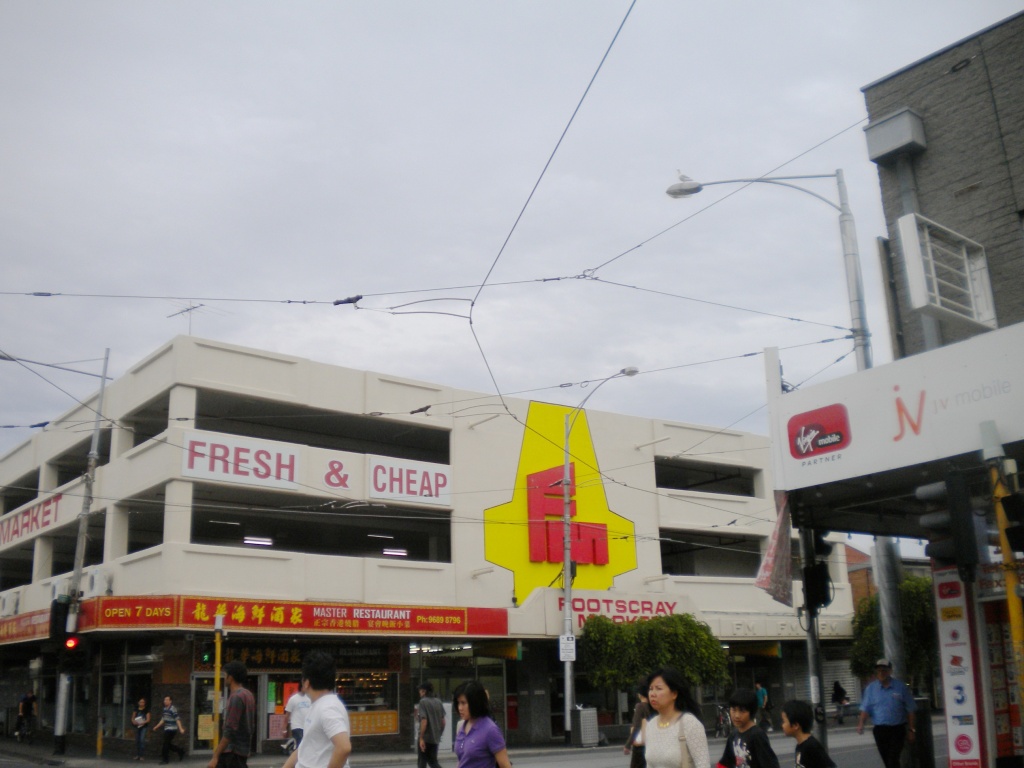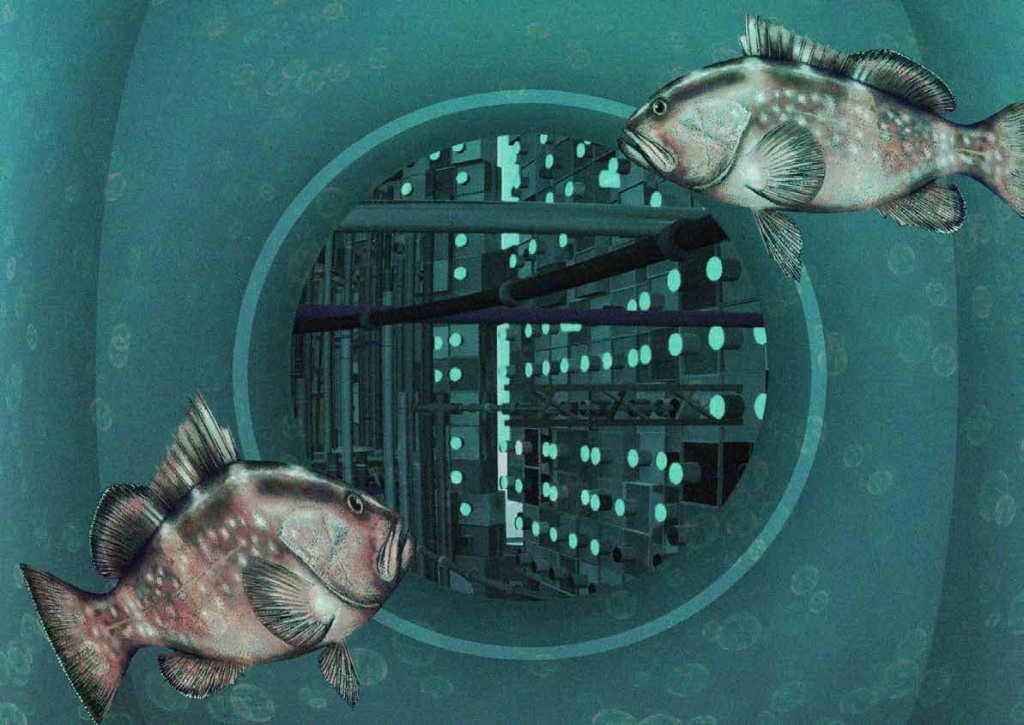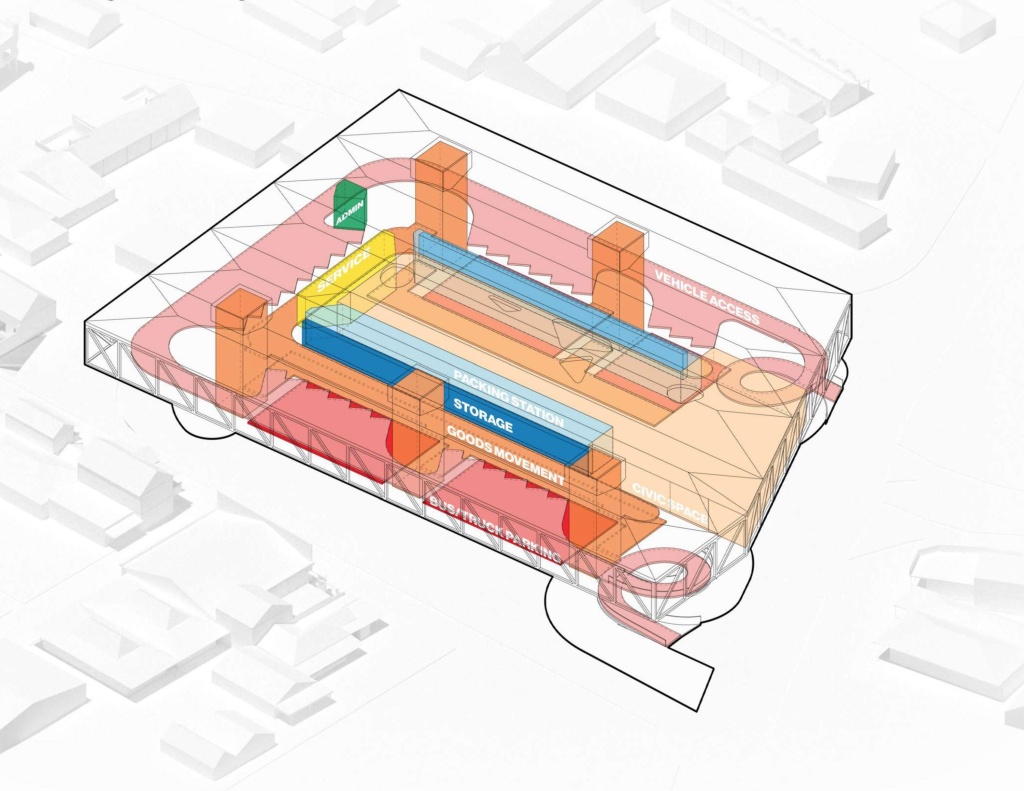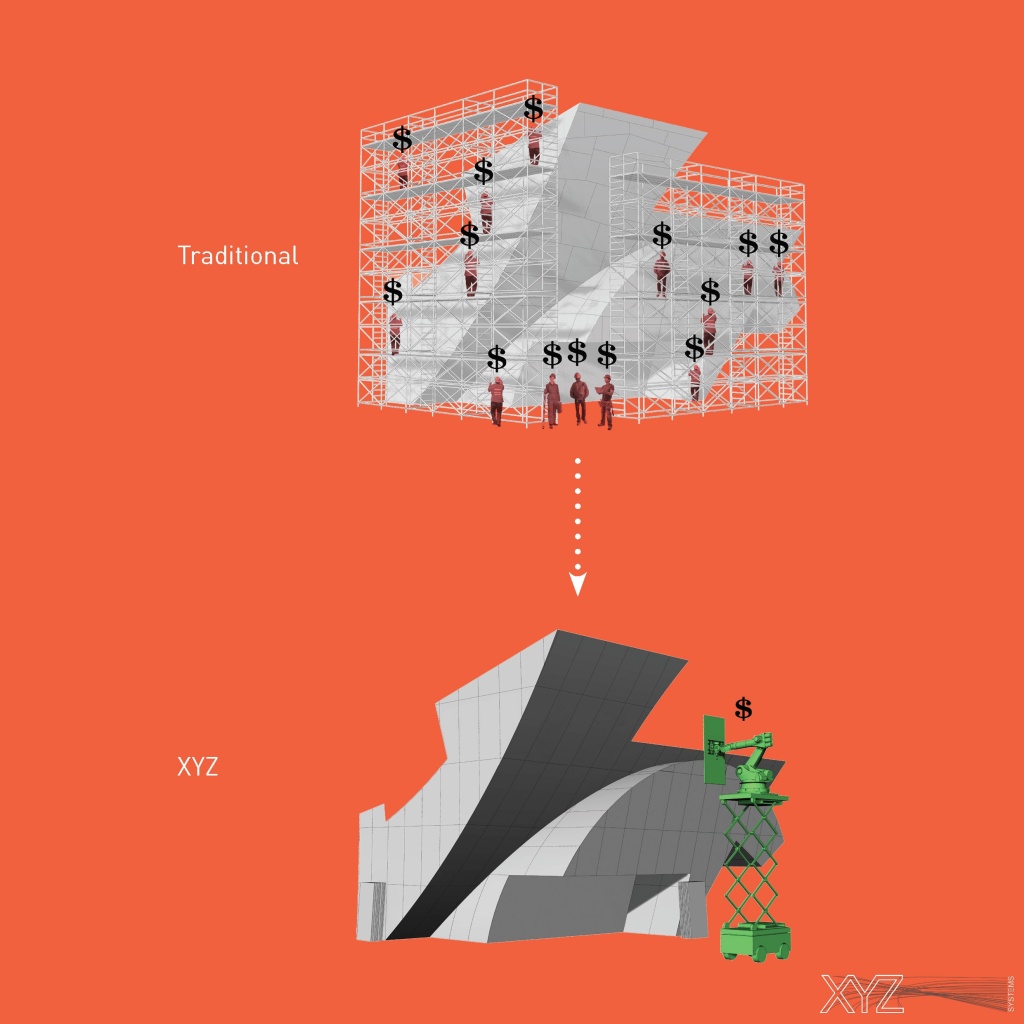The rapidly growing large cities of Asia are critical to understanding our future footprint. Asian cities provide insights into new ways of being densely urbanised. The by-product of this unprecedented metropolitan convergence will be the emergence of new urbanisms and new architectures, new models for living and making culture.
The Supertight refers to the small, intense, robust and hyper-condensed spaces that emerge as a by-product of extreme levels of urban density. Tightness arises as consequence of density, but tightness itself is not density. Tightness is a series of social, economic and cultural practices that have developed in cities as a response to the rapid growth and consolidation of cities. While architectural models of density have been heavily explored, this project investigates the culture of tightness that has emerged in Asian cities over the past thirty years, and the role that designers play in the material and social behaviours of tightness. To be tight is to be small and constrained, but also to be open to the economies and social intimacy of being close. Ultimately this project aims to unpack and convey both the delight and difficulty that emerges through the close occupation of large cities.
Graham Crist & John Doyle
With Contributions from:
Yoshiharu Tsukamoto / Atelier Bow-wow , Atelierco, Rafael A Balboa with Yasemin Sahiner, Sanuki Daisuke, Drawing Architecture Studio, Desiree Grunewald, Sue Hajdu, Tohru Horiguchi, Alban Mannisi, Yazid Ninsalam, Charles Anderson, Minsuk Cho / Mass Studies, New Office Works, Archie Pizzini, Andrew Stiff, Superimpose, Taishin Shiozaki / Shiozaki Lab, WOHA
Available to purchase through ACTAR
Super Tight explored the culture of spatial tightness emerging in Asian cities and its creative potential. This immersive exhibition considered techniques for living closely, unpacking the delight and difficulty that arises from the dense occupation of large cities.
More than half the world lives in cities, more than half the world lives in Asia, more than half of the world's megacities are in Asia. Asian cities are therefore key in examining new ways of being densely urbanised. The by-product of unprecedented metropolitan convergence is the emergence of new urbanisms and new architectures, new models for living and making culture.
“Super tight” describes the small, intense, robust and hyper-condensed spaces that emerge as a by-product of extreme levels of urban density. Tightness is both a consequence of density (but is not density itself) and a series of social, economic and cultural practices that have developed in response to the rapid growth and consolidation of cities.
In Super Tight we asked: are big cities inherently tight, or is tightness something that transcends density and can emerge without vast populations? Is tightness desirable and how is the concept relevant to thinking about future Australian cities? While urban density has been heavily explored, Super Tight looked specifically at the culture of tightness that has emerged in Asian cities over the past 30 years, and the role that designers have played in the material and social behaviours of tightness.
The exhibition examined the emergence of dense urban environments with an eye on the social, political, economic and regulatory issues that have led to the generation of present-day cities in Asia. It speculated on what causes density, how dense cities become tight, and how cultural tightness emerged.
Super Tight looked at what it means to live and work closely, through not only formal or spatial qualities, but through the sounds and feel of closeness. The exhibition questioned social attitudes to tightness, both in Australia and abroad. More broadly it proposed the concept of the “super tight” as an approach to design and culture that is valuable.
Curators and exhibition design: Graham Crist, John Doyle, Yoshiharu Tsukamoto (Atelier Bow-Wow), with a new major installation by Taishin Shiozaki (Shiozaki Laboratory).
IRREGULAR is a festival of ideas and actions for the community of people who live, work, and play in North and West Melbourne.
The IRREGULAR concept is to directly invite local identities, experts in their fields (from our First Nations community through to our new migrant community, architects, landscapers and urban designers, health and education professionals, artists, musicians, writers, entrepreneurs, and academics) to reimagine North and West Melbourne from a particular perspective close to their heart.
Each contributor will create a visual presentation of their idea to be exhibited over two days. Invited contributions will be supplemented by idea submissions from the entire local community, from which the best ideas will also be exhibited. A panel of judges will assess each idea against criteria aligned to the call-to-action of Melbourne Design Week 2024, Design the World You Want, and the three pillars of Ecology, Ethics, and Energy.
Visitors to the exhibition were asked to vote on the ideas that resonate most with them. Following the exhibition, IRREGULAR will turn to actions; resourcing, fundraising, organising, and lobbying wherever needed to bring the best ideas to reality.
IRREGULAR is an initiative of the North & West Melbourne Precinct Association, in partnership with Scanlon Foundation and Our Community House.
The SaturationCity project is a response to the curatorial proposition of the Now&When exhibition for the Australian Pavilion in the 2010 Venice Architecture Biennale, imagining Australian urban space 41 years into the future.
Our proposition acknowledges that real social and urban change is often during, or in response to periods of crisis. The conundrum for Australian urbanism is not that we have too little land, but rather that we have too much. Our cities expand on a diet of productive farmland and tenuous ribbons of infrastructure stretched to breaking point. In order to simulate the crisis conditions for urban upheaval, we have manufactured a crisis – a sea level rise of 20 metres. This scenario causes a critical evaluation of urban value – asking which zones should be preserved, modified, or returned to the landscape.
The shoreline, which Australia’s urban heritage is intrinsically tied to, is the location where the contemporary environmental debate plays out. This dialogue implies a rise in sea levels causing global change. The shoreline is similarly dynamic, symbolic of the in between, neither wet nor dry, ours nor theirs. These future urban spaces are born of this condition of ambiguity.
This project is not intended as a ‘realistic’ proposition, rather a ‘thought experiment’ for exploring a suite of design strategies within a radical hypothesis. The city, fantastical yet undeniably efficient through its decentralization of the central place, reorganization of feature nodes, and circular transport ring, is not just a city for 2050, but a city for 2500.
Common in collaboration with McGauran Giannini Soon (MGS), Dyskors and Material Thinking
Cities are responsible for up to 70% of all greenhouse gas emissions. The tightening of urban environments is one of the most significant contributions architects and urbanists can make against climate change. At the same time, Australian cities require approximately 30 times their own footprint into order to provide food for the population. Currently food is sourced from all over the world. Any consideration of urban density must include the integration of food production.
This project explores the possibility of the adaptation of cities towards the integration of urban agriculture – specifically the potential for urban agriculture facilities to fulfil a community civic role, beyond the provision of food. The project illustrated here is a small-scale community farm, that doubles as a community gathering space in Melbourne. The project serves as an Interim Urban Agriculture, a prototype for a future where the city is capable of growing what it consumes.
As mono-centric cities rapidly morph to form multi-nodal systems, what are the planning models that can be applied to facilitate integrated development?
The project proposes a new model of circular metropolis as a rare intermediary stage between a linear and networked city, a state of liminality in which future growth is consolidated around urban ribbon enveloping the lake. The expansion of the city is limited by the commodification of carbon sequestration. By dramatically limiting the land available for urbanization and creating a no build zone of reforested land around the city, we have created a hypothetical scenario in which growth is limited to hyperdense band that spans urban cores. By folding the city to a liminal ring condition, the proposal challenges the concept of land use optimization, and explores models of sharing and mediation.
FarmHD is a design led investigation exploring how high density vertical farming and associated disruptive agricultural technologies might shape the future of cities. Through the lens of architecture and urban design the project has explored what would need to shift in cities in order to make urban farming a realistic proposition, and where the opportunities for design might be in the future.
The world is urbanising at an incredible rate. While the population expands rapidly, more people are living in cities. As of recently more than half of the world’s population live in cities, and the megacity is the fastest growing urban type. At the same time man made climate change is drastically reducing the world’s arable land, jeopardising the world’s food supply. The future of food production lies in intensive industrialised processes that make maximum use of land and other resources. While not yet practical, or economically feasible, this future might include high density vertical farming.
Working with industry partners in Hong Kong, a series of design proposals have been developed that explore how the adaption of existing architectural typologies, including the office tower, parking tower, residential tower and other familiar urban forms could support the adoption of high density agriculture in urban environments. Far from the romanticised view of urban farming, what these speculations indicate is that the adoption of disruptive urban farming technologies has the potential to radically change the way our cities look and work.
Urban futures in Australia are currently a source of anxiety both within the profession, media and general public. The perfect storm of rapid population growth and the increasingly accepted un-sustainability of continued urban growth at the fringe, has delivered a pressing need for increased urban density within existing suburbs. Numerous solutions are put forward to 'solve' the issue of densification within the inner suburbs, where wealthy, and increasingly vocal residents agree with the arguments and benefits of increased density with the existing urban ; but oppose any changes to the character of 'their' neighbourhoods. Few if any of these solutions deliver the scope of new housing and other services required to meet the needs of our cites.
Linear monument proposes to occupy and build over the hundreds of thousands of square meters of railway corridors within the most sought after and valuable inner urban land. While this idea is not new, but what has changed is the ability to use parametric systems to link demographic, real estate, topographic and legal information sets, to feasibility analysis/form generation effecting radical architectures from a simple premise. The Linear Monument forms a nexus of the unfashionably poetic utopian mega structure with an intensely pragmatic/rationalist, a solution for urban densification expressly formed by the forces shaping the contemporary Australian urban condition.
The Linear Monument project was awarded a Honourable Mention in the inaugural Open Agenda competition.
This book explores an interest in the reconfiguration of architectural parameters as being orientated around fields. The emergent analogy in this discourse is that of the mapping of a vacant site: to the surveyor, the site is an empty plan, but if we consider repetitive, empirical recording as an alternative methodology, we may find it is, instead, charged with activity.
The analysis site, Golden Gai, presented a number of ambiguities. Made up of hundreds of tiny tenancies and at odds with its modernised surrounds, it is already an area of unique spatial character and of some density. Its networks of small lanes and tiny alleys is difficult to navigate as you quickly lose sense of direction amidst the sensory overload of things that crowd the way. Eight projects will speculated on the effects that proposed changes to the site may cause within the urban environment.
Purchase the book at LULU
Affording Tightness is a speculative essay that sits within the field of architecture, urbanism and broader questions of economics, planning and city making. It responds to broader questions of equity and inclusiveness in urban environments, specifically Lefebvre’s concept of “the right to the city.” Within the field of architecture it builds upon the work of Lacaton & Vassal, exploring a loose-relationship between building and function, and Alejandro Aravena exploring concepts of incremental growth at the building and city scale, as strategies of designed affordability. The project builds upon earlier work exploring the concept of the ‘super tight,’ investigating architectural and economic models of density, and qualitative assessments of how the built environment adapts to cultural, social and other pressures when intensely inhabited. The essay was a scholarly response to an open call for submission exploring issues of affordability in urbanism and the built environment. It introduces the original concept of the ‘Tight City’ to describe the small, intense, robust and hyper-condensed architectural spaces that emerge as a by-product of extreme levels of urban densification – specifically in Asian cities. It argues that urban affordability is best achieved through the adoption of ‘tight’ design strategies that embrace density in various forms, which are illustrated through a series of exemplar urban and architectural projects. It contributes to research into urban affordability by including considerations of climate change and environmental ‘affordability’ as inseparable from those of social sustainability. The article was selected through a competitive call and was published in Monu Magazine issue #32 Affordable Urbanism. Monu Magazine is a bi-annual publication that is recognised internationally as a significant forum for architects, urbanists and theorists that are working on urban topics.
Purchase at MONU
This paper unpacks recent speculative design research projects exploring how the uptake of high-density vertical farming and other disruptive agricultural technologies might shape future cities. The world is urbanising at an accelerating rate. While the population expands rapidly, more people are living in cities. The dispersed megacity is the fastest growing urban form. This and human caused climate change is drastically reducing the world’s arable land, jeopardising world food supplies. The future of food production lies in intensive industrialised processes that make maximum use of land and other resources. While not yet practical, or economically feasible, this future might include high-density vertical farming. In this context, the paper has several concerns: architectural design strategies that explore the potential for emerging agricultural technologies and building typologies; architectural design strategies that allow for new economies to emerge and radically shift the way our cities are organized; the articulation of novel design research methodologies that use techniques of counterfactual speculation and scenario building as a way of uncovering and describing possible futures. These ideas will be illustrated through recent work completed through research-based architecture design studios.
This paper explores the urban and architectural implications of the provision of a network of small-scale decentralised community infrastructure hubs in Central Java, Indonesia.
Working from previous studies, the paper identifies critical infrastructure challenges in Central Java, specifically a series of critical interchange points between the high-volume high-speed intercity road infrastructure, and the small-scale local peri-urban ‘desakota’ landscape of Central Java, between Magelang, Yogyakarta and Surakarta that is unsuited for traditional logistics.
In response, a number of top-down conventional infrastructural solutions to this challenge have been proposed. These include the implementation of large-scale manufacturing and logistics hubs on the periphery of cities, and the upgrading of local/rural road networks to accommodate decentralised industrialisation and development. The island of Java, and Central Java in particular is home to a highly specific form of fine grain rural-urbanism, described as a desakota. These solutions would have a dramatic and negative impact on the existing form of desakota urbanisation in the region.
In contrast to large scale and hard infrastructural solutions, this paper will explore the implementation of a distributed network of architectural scale intermodal logistics interchanges located at key nodes in urban fabric that facilitate transition from existing local road networks to intercity highways, providing access to national and international markets for communities within desakota environments serviced by existing small roads, lanes and tracks. The ambition of this approach is to develop architectural prototypes for logistics hubs that provide economic uplift to communities, while limiting damage to this unique form of metropolis.
The nature of architectural practice is undergoing rapid change and evolution. The increasing adoption of digital fabrication and direct manufacturing technologies within the design and construction industries presents both significant challenges and opportunities for the practice of architecture. Digital fabrication refers to the direct manufacture of three-dimensional objects from digital files using additive (3D printing) or subtractive processes (milling, laser cutting etc). There is a well-established lineage of investigations of advanced fabrication in architectural design and education. However, the majority of this research has focused on the development of, or design potential presented by, novel tectonics made possible by these techniques and/or the opportunities for material or process optimization that these tools offer. There is limited research into how the adoption of these technologies will impact the practice of architecture itself. The adoption of these techniques allows for the fabrication of components, assemblies or increasingly whole structures directly from digital design models, resulting in a dramatic collapse of the traditional separation between the architect and the produced object. This is a significant opportunity for architecture. At RMIT these issues are being explored in the Architecture Professional Practice 3 course. In the context of this course students, as emerging practitioners, are asked to respond to these changes described above and leverage the opportunities that they offer to develop proposals for innovative modes of practice. This paper will describe the role and value of a design research approach for the teaching of Professional Practice in architectural education and in exploring the emerging role of the architect. Specifically, investigating the application of speculative modelling of business propositions as a mechanism for understating the practice of architecture and its relationship with entrepreneurship.
In 2010 a small website was developed for a Masters Design Studio at RMIT University. The studio was examining information driven approaches to generative architectural and urban design at a series of sites in Melbourne. The studio called for an intense period of empirical contextual mapping. The website allowed students with smart phones to log on from any location on the site and enter, classify and record information about a site. Over time a complex map was constructed with more than a thousand points of data recorded, which was later developed into a series of design proposals.
The development of this small, prototypical website reflects the reality of contemporary architectural practice and, increasingly, architectural education. Architectural practice has become increasingly decentralised, with projects carried out simultaneously across continents, connected by open source information sharing platforms - exemplified in UNstudio’s new ‘open source’ practice model. Only recently the idea of a Facebook group in order to chart, curate, collate and communicate progress, ideas and commentary was foreign to many. Today, it is common place.
With the advent of the ‘Itunes University ‘ and the rapid expansion of online delivery of educational content, the established structure of the design studio has been challenged. With students increasingly engaging remotely, we speculate that the future of the design studio will be one that is perhaps best embodied in the idea of a “peer to peer” network topology.
Information is ungoverned and unregulated, and student work becomes independently assessed, balanced and adapted outside the conventional role of the tutor as a guide or teacher. This paper will explore, through examples of studios staged between Tokyo and Melbourne, involving four universities, the potential for an open source model of architecture studio and its potential impact on the future of design practice.
Purchase at URO
